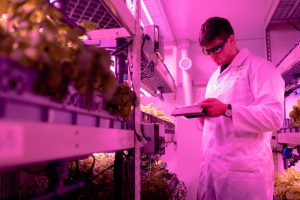Exploring the Hidden Potential of Next-Generation Transportation Infrastructure
When it comes to the future of transportation, there is no denying that the advancement of technology has played and will continue to play a crucial role. From self-driving cars to hyperloop transportation systems, we are constantly pushing the boundaries of what is possible. However, there is one aspect that often gets overlooked – the infrastructure. In this article, we will explore the hidden potential of next-generation transportation infrastructure and how it can shape the future of transportation as we know it.
The Current State of Transportation Infrastructure
Before we dive into the potential of next-generation transportation infrastructure, let’s take a look at the current state of things. In most developed countries, the transportation infrastructure has remained relatively unchanged for decades. Roads, highways, and bridges have been the primary means of transportation, along with train and air travel. While these modes of transportation have served us well, they are also facing numerous challenges.
One of the most significant challenges is the increasing demand for transportation. As the world population continues to grow, there is a greater need for efficient and sustainable transportation systems. Additionally, the ever-growing problem of traffic congestion in major cities is taking a toll on our environment and economy. It is estimated that traffic congestion costs the U.S. economy $120 billion in wasted time and fuel every year.
Moreover, the traditional transportation infrastructure is not equipped to handle the impacts of climate change. Rising sea levels and extreme weather events are threatening existing infrastructure, such as bridges and roads. We need to rethink our approach to transportation infrastructure to address these challenges.
The Hidden Potential of Next-Generation Transportation Infrastructure
Smart and Sustainable Solutions
Next-generation transportation infrastructure is all about embracing new technologies and innovative ideas to create smart and sustainable solutions. One example of this is the concept of “smart roads.” These roads will incorporate sensors and cutting-edge technology to monitor traffic flow, detect accidents, and provide real-time data to drivers. This will not only reduce the risk of accidents and improve traffic flow but also enable more efficient use of resources.
Another exciting development is the use of renewable energy in transportation infrastructure. With the increasing emphasis on reducing carbon emissions, this is a sustainable solution that can significantly impact the future of transportation. For instance, the Netherlands has built a solar-powered bike path that generates electricity to power streetlights and homes. This not only reduces the strain on the energy grid but also promotes eco-friendly transportation.
Improved and Efficient Public Transportation
Next-generation transportation infrastructure also includes a focus on improving and expanding public transportation systems. This is crucial for addressing the demand for transportation and reducing congestion on roads. One promising concept in this area is the hyperloop transportation system. This futuristic mode of transportation uses magnetic levitation technology to transport passengers and freight at super-fast speeds through vacuum-sealed tubes. This will revolutionize long-distance travel and reduce travel time between major cities from hours to minutes.
Additionally, the rise of electric and autonomous vehicles will also lead to more efficient public transportation. Electric buses and shared autonomous vehicles can significantly reduce carbon emissions and alleviate congestion in major cities. These advancements will also make public transportation more accessible and affordable for all.
Resilience and Adaptability
Next-generation transportation infrastructure needs to be resilient and adaptable to keep up with the changing times and minimize the impacts of climate change. This includes using resilient materials and design in construction and incorporating features that can withstand natural disasters such as floods and earthquakes. For instance, the world’s first underwater tunnel built to withstand earthquakes recently opened in Japan, showcasing the potential of next-generation transportation infrastructure.
Conclusion
The future of transportation is full of possibilities, and next-generation transportation infrastructure is the key to unlocking its potential. It will not only address the current challenges we face but also create a more sustainable and efficient transportation system for generations to come. With the right investments and innovative ideas, we can shape a future where transportation enhances our lives without harming the environment. It is up to us to explore the hidden potential of next-generation transportation infrastructure and make it a reality.











